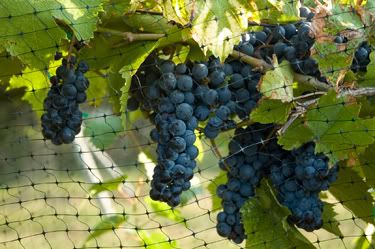
by Alex A. Kecskes
It’s springtime and you’re ready to reap the rewards of your hard work in the garden. You diligently planted, weeded, and nurtured your garden. You also kept the pests at bay with regular spraying of insecticides. But now there’s a new threat to your garden: pest birds. They’re starting to come in and destroy your flowers, eat your tomatoes, and peck at the fruits ripening in your fruit trees.
You tried squirting these annoying birds with your water hose. But they just came back the next morning. Even your dog was no help, for the birds simply waited till your dog was in the house to feast on the vegetables and fruits in your trees.
You’re at your wits end on this one. Fortunately, your neighbor told you how the professionals get rid of pest birds. They use things that are effective and humane. Here’s what you discovered:
Wrap Up Veggie Plants in Plastic Bird Netting
Easy to use and highly effective, Plastic Bird Netting keeps pest birds from getting at the vegetable plants in your garden. This barrier deterrent is ideal for smaller gardens and small fruit trees. Wrap your plants with the netting or simply cover entire sections of your garden with the netting using poles. To protect fruit trees, measure the circumference of the tree and cut the net to size (allow at least one foot extra around the circumference). Secure the netting with twine, zip ties, or hog rings. Look for high quality plastic bird netting made of durable, U.V.-protected polypropylene. It's strong, light, easy to handle and virtually invisible.
Set Up a Sonic Bird Deterrent
If you have a large garden, or a number of fruit trees spread out over, say, an acre, you’ll want to invest in a Sonic Bird Deterrent. These devices emit bird distress and predator calls that convince pest birds that their natural enemy is hunting them in the area. The sounds resemble normal bird sounds, so they won’t irritate your pets, friends or neighbors. If more than one species of bird is attacking your garden, there’s one sonic system that emits distress and predator calls for 22 different species of birds. This unit covers up to an acre of land and can be programmed to turn on or off at night.
Hang Up Some Visual Bird Deterrents
An economical way to go, Visual Bird Deterrents can be most effective in deterring pest birds from your garden, especially when used together with other bird deterrents. They include Flash Tape and Reflective Banners, which reflect sunlight and rattle in the breeze. There’s also Scare Eye Diverters and Bird Scare Balloons. These bob and weave in the breeze and have huge large predator eyes to frighten birds away. You can attach a number of these deterrents in high visibility areas throughout your garden to spook pest birds.

by Terra Anders
Hirundo rustica! It sounds like a battle cry of a foreign militia group. Actually, it is the scientific name for the common barn swallow. Recognized by its long forked tail, glistening blue top feathers and soft pink breast color, the swallow can be seen flitting about almost endlessly throughout North America. One of the swallow’s most popular spots is California in the spring and summer.
Although these birds are pleasant to watch, they can create a nuisance in homes, structures, barns or stables. Anywhere there are birds there is bird droppings. In the case of swallows, their unique nesting habits add the additional title of pest bird. Of the seven species of swallows that breed in California, the cliff and barn swallows build mud nests on the sides of homes, barns, garden gazebos, or stables. These annoying mud nests often have landowners wondering how to keep these pest birds off their property.
Swallows look for structures that satisfy their four basic needs: an open area for seeking food, clean water for drinking and bathing, a vertical surface sheltered by an overhang for protection and attaching their nest, and, of course, enough good quality mud with which to build their mud nest. Once the birds find this perfect spot, they will come back year after year.
The mud nests, just like the bird droppings can become infested with bugs or disease that can affect human health. It is important to find humane ways to eliminate the nests and prevent the pest birds from returning the next year. During September and through January the swallows are still vacationing in South America, so now is the best time to install bird deterrents. Simply removing the abandoned nest will not deter these pest birds from returning. In fact, removing nests during their “official” nesting season (mid-February to September 1) is not permitted in California without a special permit.
To keep pest birds away from a previously occupied nesting area, bird exclusion methods are required. Once the nest is removed and the area clean from debris, feathers and mud, use the methods suggested below to create a space that is uncomfortable and uninviting. Bird Slopes under overhangs prevent the birds from getting a foothold on the vertical surfaces. The UV protected slopes are a slippery, steeply slanted physical bird deterrent that blocks the overhang of the building. These are ideal for ledges /overhangs that are about six inches wide. They are set in position and held in place with exterior polyurethane adhesive.
Hanging No Nasty Nest strips under eaves or overhangs are another effective way to keep birds away from the underside of overhangs or ledges. These are 3” x 11” strips of plastic that have a cluster of clear nylon strings dangling down. Applying these irritating ticklers where the old nests used to be (or where new nests might be built) will coax pest birds to look elsewhere.
These simple bird control methods are aesthetically appealing and can be easily installed by the homeowner using adhesive, glue or nails.
|


 RSS Feed
RSS Feed